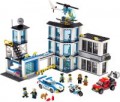Number of pieces
The total number of parts included in the delivery of the designer. At the same time, the calculation, usually, also takes into account the details that make up individual characters (torso, arms, legs, head, etc.) — despite the fact that the figures are most often delivered assembled and are not designed for disassembly during normal use . Also note that the kit may include several spare parts, in case of breakage or loss of any of the main elements.
Number of animals
The number of animals in the set. In most cases, the individual collected elements of the set, respectively, in the form of an animal, act as animals. It can be both small cats, squirrels, dogs, birds, and larger animals — horses, elephants, crocodiles, sharks. There are also animals that will have to be assembled from several parts (similar to a character). However, the finished constructor in the form of an animal is not counted as the presence of animals in the set. It is worth noting that an abundant number of corresponding creatures expands the play possibilities of the designer and makes it more exciting and educational for the child.
Moving elements (mechanics)
Details and elements that, after assembling the designer, can move, but are not driven by a motor; in other words, moving parts that need to be moved manually. These can be, for example, windows and doors, hatches, screws, crane booms, etc. The exception is rotating wheels — in this case they are not considered moving elements.
Mechanical moving elements can be combined with motorized ones (see below).

